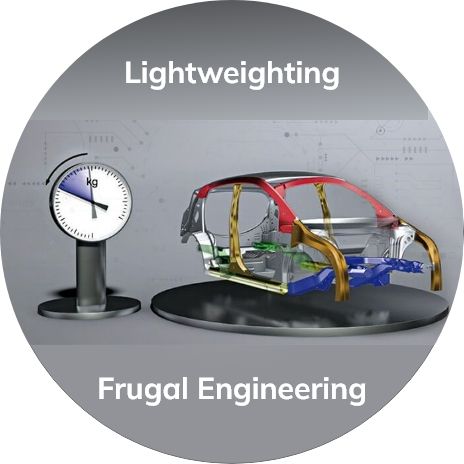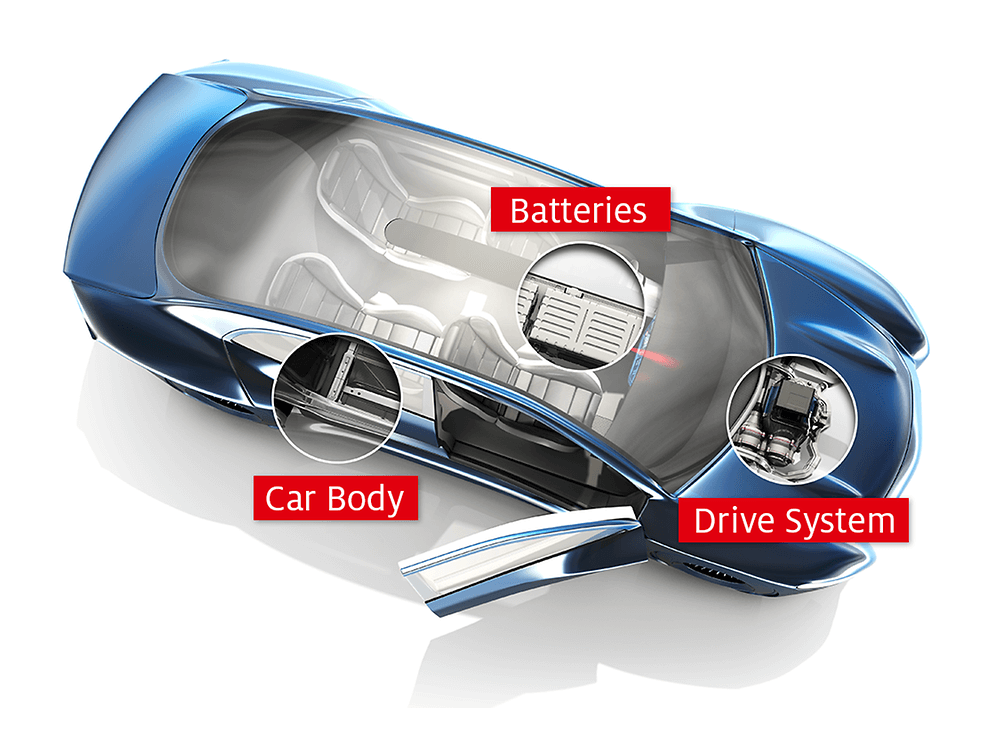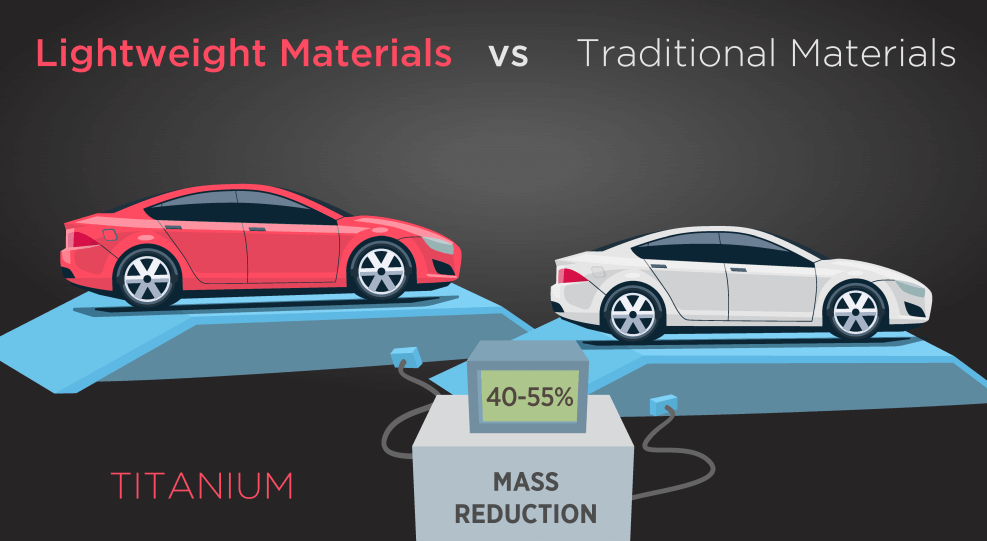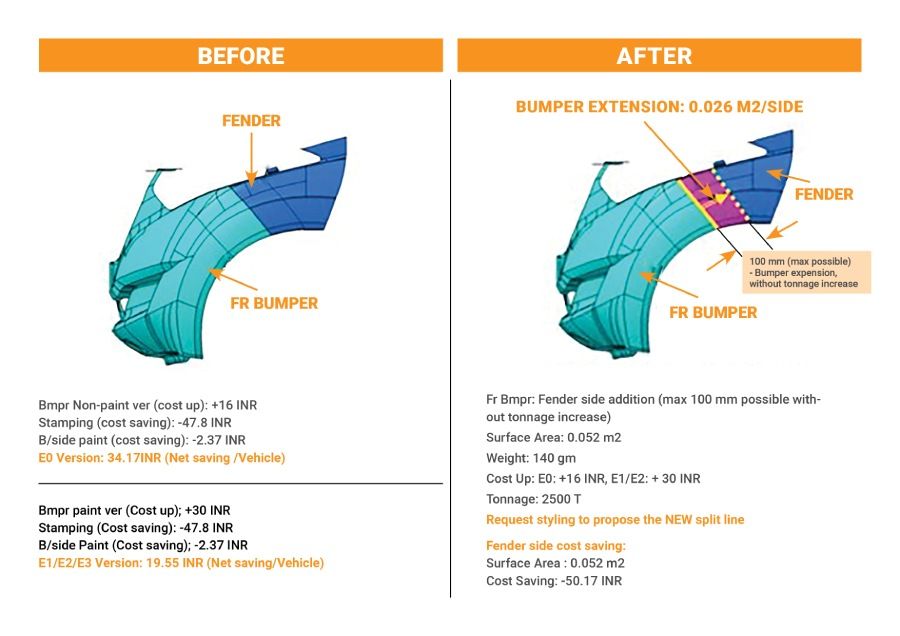Lightweighting and Frugal Engineering go hand-in-hand
by Admin. | Jul 14th, 2021

Lightweighting has been an age-old industry go-to word for anything and everything connected to body weight of the vehicle to fuel efficiency ratios. Since the inception of the automotive, there has been a constant push to decrease the weight of this ‘metal structure on wheels’. During the inception phase, much of the components were cast iron or steel– which met two specific requirements at the time, one – the availability of iron ore and two, the robustness or sturdiness associated with the metal. As industrialization, and alternative alloys surfaced, the ratio of iron to other metals decreased in a vehicle. Though this phase had a long and glorious stretch in the automotive history, need for Lightweighting vehicles gained momentum towards the latter phase of the 20th century – let’s say 25 to 30 years ago; the term was heavily associated with supercars. Sporting an all-aluminum chassis or carbon fiber components meant edging out its nearest competitor by seconds on the drag strip – a world of difference in the automotive purist’s universe. Realistically this just made them go fast, not achieve fuel economies which the mass market craved for. However, today in the 21st century, this is not limited to the glitz and glamorous world of the supercar and hyper car segments but also in the humble world of mass market segments.
The Inevitable Trickle Down – a Reality Check! Why this shift in priorities for a mass market OEM; one might ponder? As super/hyper cars have levelled up to carbon fiber, glass fiber, composites, and dare I say magnesium and neo-substrates! The mass market vehicles have started borrowing from earlier iterations, and that have become economical to produce in contemporary settings through a mix of trickle down and necessity. Trickle down of technology is iterative and generational, to put it in black and white, however, the reality is often in the grey. Lightweighting comes with its own set of challenges– one cannot use any or all materials just for its lightness, instead, one must also assess its strength and durability which is also closely related to safety, reaction to heat, stress, and other external vagaries of nature and physics. What works for a two door, carbon fiber, fuel guzzling-million-dollar super car will not make sense on a four door budget hatchback or will it?
Why OEMs and Suppliers have to Bite the Bait? Let’s pause and reflect; what works on a super car will work on a mass market vehicle, provided, the costs are evened out by economies of scale and cost of production is significantly lowered by these substitutes. Lightweighting is one of the top-of-mind concerns for most OEMs and hence their B2B suppliers. This necessitates a holistic reduction in weight across body, chassis, interiors, powertrain, and engine – not just in metals on body but across all materials used on the vehicle. How the B2B suppliers reduce the weight will heavily influence the cost of the vehicle and also the segment an OEM positions its vehicle. Now, one of the key automotive trends in recent years has been the focus on “Engine downsizing”. This is a simple yet effective technique to reduce fuel consumption, therefore emissions and weight of the vehicle – a step that doesn’t necessarily make use of light weight alloys or expensive composites but bypasses common nomenclature to achieve the end goal. On the B2B end of the spectrum, suppliers are increasingly using polymer composites, plastics, and magnesium structures in seating structures, lighting, and body panels to help OEMs achieve the goal of building lightweight vehicles.

What Would Happen if I Crash? Having established the need to lightweight for fuel efficiency, one must also pull out the checklist on associated effects of using such materials. Would the vehicle now be increasingly prone to crumbling in the event of a crash? What is the catch? – Well, the impact of using a lighter material does impact the robustness and the stiffness of the structure and therefore the vehicle – but, OEMs aren’t completely shifting from traditional metals for new age composites. OEMs are using a mix of multi-material structural components and joining techniques to achieve better scores on crash tests and real-world simulations. Today’s concerns revolve around reducing cost of materials and identifying techniques to hold composites and alloys of varying properties together under operating conditions. Reality dictates that OEMs continue to employ low carbon steel, aluminum, and iron alloys to build majority of their frames and structures while simultaneously incorporating neo-materials and composites as part of body structure that will ensure a combination of strength, durability, robustness along with light weighting and flexible incorporation. A win-win for now. In addition, new age EVs are increasingly adopting the Frunk! A feature made famous by the rear engine Porsche’s of yester years and the new age Tesla in the EV line of things. By carving out a section for extra storage, in the front end of the vehicle, the consumer definitely gets the added space however compromising on structural integrity in the case of a crash. A win-loss!
Regulatory Body’s Blue-Eyed Cause – Lightweighting and Emissions The Lightweighting trend is also championed by multiple entities that have vested interest in the partial end goal of this crusade – fuel efficiency and reduced emissions. The crusader is the regulatory body of the various nations who are driving OEMs to achieve reduced emissions within a set timeframe. For instance CAFE or Corporate Average Fuel Efficiency/Economy, a regulatory body that chalks out regulatory policies; in this aspect for developed and developing economies including India has set forth regulations that mandates OEMs to check emissions and ensure reduced dependence on traditional fuels such as gasoline and diesel, and control exhaust end emissions – less than 130 gm per km till 2022 and below 113 gm per km beyond that. On the domestic front, India’s BSVI deadlines will work in tandem to realize this cause. One might argue that emission end output might not have causal derivatives from the existing vehicular bodies, as the weight of these structures have already reduced significantly over the decade – there is only so much an OEM can shave off to achieve the emission threshold through Lightweighting
The Electric Vehicle Conundrum The regulatory bodies’ ulterior motive as some would suggest is to hasten the adoption of Electric vehicles (EVs). There is only so much bandwidth an OEM can do, to work within the realms of reducing emissions from engine downsizing and treating exhaust gases. Hence the realistic route would be to traverse the path of EV. The auto industry has already accepted this bitter expensive pill and is now heavily vested in increasing its EV portfolio globally. However, this presents a catch 22 situation. EVs might have put one concern to rest – the emissions end of the argument but it is simultaneously staring at a familiar foe in weight, pun intended. To the uninitiated, this might seem to be a very minor setback in the cause to achieve something greater. On the flipside, EVs now face the same problems faced by their conventional cousins – the IC engines, which is “Range” (read about it on our latest blog – EVs and Range Anxiety). The battery packs which make up the core of the EVs have significant weight associated with it, making an EV considerably heavier and putting a lot more stress on the energy source (battery). This causes drop in range, or in conventional engine terms – lower mileage. There is increasing pressure on EV manufacturers to reduce weight of the body structures through novel applications of lightweighting, one such instance is the integration of wheel end systems and motors independently while also having swappable batteries placed on storage beds, ensuring effective usage of space for purpose.

Enter Hinduja Tech! – The Frugal solution to your heavy engineering burden

Hinduja Tech’s unique frugal Engineering paradigm has helped multiple OEMs realize cost savings by shaving off sections on body panels by which the OEMs not only realized monetary gains but also significantly reduced the weight of the vehicle when replicated on both sides of the vehicle. Let’s get into the details- For this to work, the engineering team had to increase certain estate on the bumper module and decrease sections on the fender. Though the bumper module increased in cost and weight by ₹30 INR and 140gm respectively, Hinduja Tech’s BIW practice helped in reducing fender costs by ₹50 INR and weight by 400 gm, approximately half a kilo! If that puts things into perspective. This helped the OEM realize a net saving of ₹20 INR and weight savings of 260 gm per vehicle. Another instance is the re-engineering and frugal engineering of seats and seat structures, by reducing the number of redundant components in the form of springs, and engineering it to perform at the same level as before or even better; OEMs realize savings on the B2B and sourcing aspect, reduce weight of the module, and ensure the portfolio is on the path towards lightweighting – all ensured through Hinduja Tech’s frugal engineering solution. During this engagement, Hinduja Tech helped the OEM save ₹200 INR and also reduce weight by 360 gm per vehicle.

Hinduja Tech is also driven towards accelerating the adoption of EVs; its Electric Vehicle Engineering team is equipped to work on designing, building, prototyping, battery swapping, with the expertise and proven experience to find solutions to most of the engineering challenges that OEMs and suppliers are facing today when it comes to lightweighting; IC or EV. For insights and details on how Hinduja Tech can add value and help solve your lightweighting concerns, write to us at info@hindujatech.com or you can browse through our corporate website to learn more about our Engineering Prowess.


.png)
.png)


